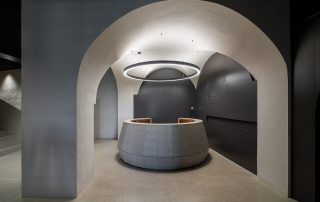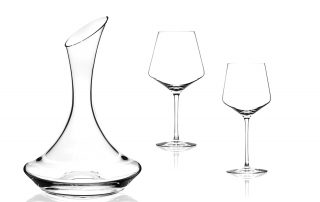Matevž Čelik – an architect, a critic, a writer, an editor, an organiser, and a museum director.
He indeed is a man of many professions.
For the last ten years, he has been running the Museum of Architecture and Design in Ljubljana, Slovenia. Ten years ago, when he applied for the position of the museum Director, it took him quite a lot of courage to make that step. The museum is, after all, an important state institution and his predecessor was a famous Slovenian art historian and critic. Apart from that, the general expectations were extremely high and besides, certain issues of that particular period had to be addressed. Many might have seen this position as an opportunity to have a safe and comfortable job. Matevž Čelik, however, saw it as a challenge. He accepted that challenge and started developing his own, dynamic entity which evolved into an institution that continuously examines the current situation and explores the possibilities of a future development. As the museum director, he pays equal attention to the museum permanent collection and temporary exhibitions as well as to various research projects.
A good visionary should be able to make the right decisions, choose the right paths and tools, and select the right people to cooperate with in order to achieve a specific goal. In 2015, Čelik thus initiated the Future Architecture Platform with an aim to analyse the role of architecture in modern society and to examine the role of architecture in the future. He invited some established institutions, NGOs, and young creators and thinkers to take part in the project. For over ten years now, he has continuously been exploring the ways of being useful to the society or community and, while doing so, he has been ignoring restrictions, establishing new values, and creating a network of friends, collaborators, and artists. Many people are well aware of the fact that it is rather difficult to be a role model, which is a task one usually assumes when holding a certain position. And Matevž has become a role model very spontaneously and naturally by embodying the important values he has always successfully demonstrated and applied in daily life.
Curator of the award: Andrija Rusan; Oris
Interview
Prepared by Vesna Skubic
Portrait photo: Jože Suhadolnik
After finishing your studies at the Faculty of Architecture, you worked as an independent architect for more than ten years, before becoming an architecture critic. Why did you decide to make a shift from architectural planning to a different type of activity within the profession itself?
The list of duties carried out by the contemporary architectural practice is much more extensive than the one related to architectural planning. Architecture criticism is closely related to architectural practice and architectural planning. While working with our study mentor, professor Vojteh Ravnikar, we were supposed to set ourselves tasks, select their locations, and develop a project. Our selection was based on criticism. We had to explain why we had selected a certain location and a certain programme. The architecture students commonly opted for degraded and abandoned premises that needed an architectural intervention. We analysed those sites, explored their history, compared them with certain similar cases and solutions, and on the basis of all those parameters we developed certain architecture. We learnt that every single project constitutes a part of a wider context and that a critical attitude towards that very context shall serve as the basis of architectural planning. Such architectural thinking represents not only a foundation for architectural innovations, but it also represents a condition for the development of architecture as a profession. Consequently, my independent architectural practice was always related to both – planning as well as criticism. When a construction site was opened for my first project in Lesce, I published my first article in Sobotna priloga (Delo newspaper supplement), and that article was a critique of neoliberal investors. Instead of planning buildings, I am now in charge of planning cultural programmes in architecture and design, where critical understanding of a context is even more important.
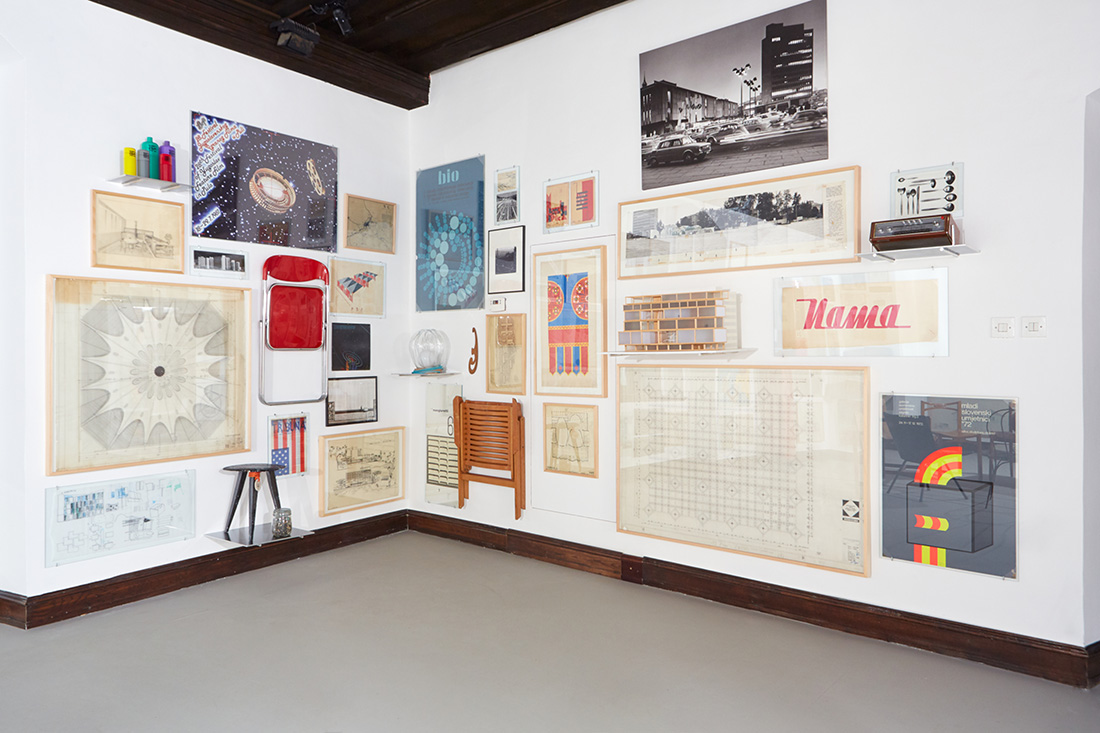
Subject matter and collection: Presentation of the Museum of Architecture and Design collections, 14 November 2019 – 31 January 2021; curators: Cvetka Požar, Maja Vardjan; expert assistants: Špela Šubic, Bogo Zupančič, photo: Klemen Ilovar
By performing a broad range of diverse work duties, you have been given an opportunity to gain a wider insight into architecture. You claim that architecture is not just one of the visual art disciplines, but you see it as a manner we perceive, think and live a certain space. What was the fundamental turning point that changed your views on architecture?
I consider my twenty-year practice more as a piling of layers and I do not really see any twists or turning points in my work so far. However, it is true that there have been some big leaps in my career, the leaps we are all faced with after finishing our studies. Almost every young architect has been faced with such a leap during his first architectural implementation and building phases, at the construction sites, and at the meetings with various operators, building contractors, investors and supervisors. One can realize that architecture is not a game which can be played by architects on their own, but that a good final result shall be based on productive and fruitful cooperation among all the players. Some of them place orders, others plan and carry out estimations, there are also those who build, and the ones who will be the users and occupants of a building. In order to achieve good architecture, each player should understand his own role and at the same time all players should reach an agreement regarding common objectives. However, in most cases, unfortunately, this is often not the case. My second important finding was that architecture is losing its significance in our society, mostly due to the fact that architects tend to glorify the past which does not exist anymore, and besides, they also blindly fulfil all, even damaging tasks, without any critical reflection. Bearing this in mind, I came to the conclusion it is high time for architects to focus on a critical production of ideas and to establish carefully planned and well-thought-out projects which shall dictate architectural development in the future. This represents the foundation of the Future Architecture platform.
Through the Future Architecture platform, many have sent you an answer to the following question: What do you consider important for the future of architecture and how will architecture develop in the future? What is your opinion regarding this question?
A few decades ago, reflections on the future were related to futuristic visions. Today, the future is not perceived as something extremely distant, instead we see it as something that will happen very soon, basically tomorrow, and we perceive the future as something strongly related to what is happening today. Architecture could play an extremely important role in the future. However, as a profession, architecture should become much more empathic towards others and critical towards itself. By properly devised spatial planning and architecture, numerous injustices and inequalities could be abolished, and besides, we would achieve a favourable impact on climate changes and reduce the quantity of waste. Nevertheless, we should first acknowledge that the established model of architectural offices, which are competing for various opportunities and striving to accomplish their tasks, is no longer adequate and sustainable. An architectural office today should be able to analyse client orders in a critical manner and either accept them or reject them, depending on conditions dictated by the responsibility towards environment and a community. In these circumstances, the role of “other architects” – as referred to by Giovanna Borassi, the author of a book and exhibition “The Other Architect”, is becoming increasingly important. These are architectural offices which do not necessarily aim to focus on building and construction. They are engaged in the area of architecture, but they carry out some other projects. They see architecture as a field of intellectual exploration and experimenting, and in their view, architecture should provide civil society with an expert advice and support, thus contributing to its proper functioning. These “other architects” use other methodologies and tools, consequently achieving different results. The future of architecture lies somewhere in between, somewhere among these new architectural laboratories, agencies, institutes on one side and classical architectural offices on the other.
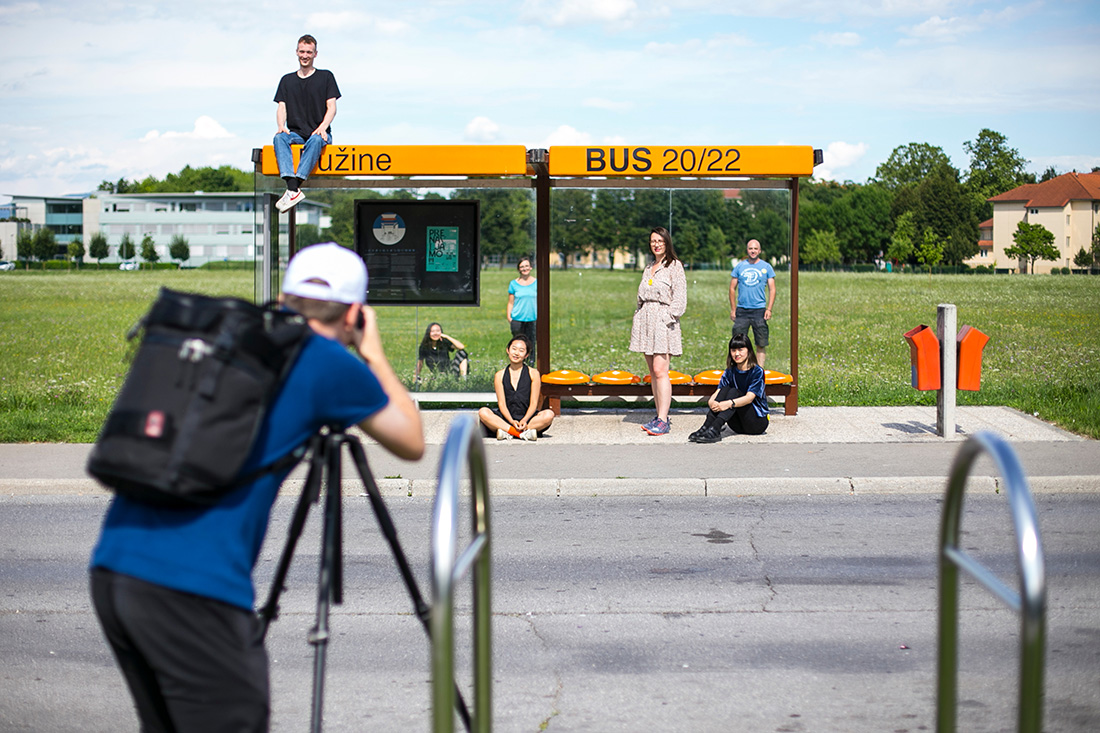
Buses 20 and 22 last stop, renovated for the exhibition by Saša J. Maechtig: Systems, structures, strategies, 26 November 2015 – 3 April 2016, photo: Janez Klenovšek
You became the director of the Museum of Architecture and Design (MAO) in 2010. Why did you decide to apply for the position of MAO director?
I decided to apply for this position, because I wanted to turn the former Architectural museum into a modern and attractive architecture and design centre. While working for Trajekt (Institute for Spatial Culture), where we examined and observed spatial issues, I realised that an institutional space shall be vital to discuss the importance of architecture, living space, heritage and future visions. Slovenia is a country with a truly rich architectural and design heritage and besides, it has some topmost creators. As a director of the new national institution, I wanted to link projects and research activities in those areas. My aim was to establish a museum that would be internationally active, which would regularly present Slovenian architecture and design abroad, and which would also invite interesting individuals to give their presentations in Slovenia. At the same time, I planned to turn the museum into a place with engaging and exciting activities, where everyone would find some interesting things related to architecture and design, and where people would come to enjoy themselves and have good time.
What expectations did you have at the beginning of your director career path and what are your expectations today, ten years later?
Ten years ago, I decided to terminate all other projects and I made a decision that, for some time, my only project would be MAO and that I will dedicate 100% of my time to its reorganisation. People working in the museum have always been my main priority. That rule applied ten years ago and this still remains the case today. It is the people who represent the museum. They shall be able to work, use their knowledge and improve their work skills. The museum would not exist without people. Ten years ago, I set myself a task that we would establish a modern, diverse and interesting programme based on the grounds of the former Architecture Museum of Ljubljana. We set ourselves the goal of developing a museum which would become an internationally renowned and highly-esteemed institution. The transformation of the Biennial of Design was our key project representing one of our biggest challenges. The double role of the museum, which was every two years converted into biennial, eventually turned out to represent a driving force providing useful reflections on the role of a contemporary museum. This resulted in various important changes and new projects. Now, ten years later, MAO plays a much wider role and it has multiple functions – it is a museum, a platform, and an accelerator for promising creators. In the future, we would like to strengthen the role of the museum and establish an organisational culture which would provide long-term, topmost architectural and design events for MAO visitors, experts, and partners.
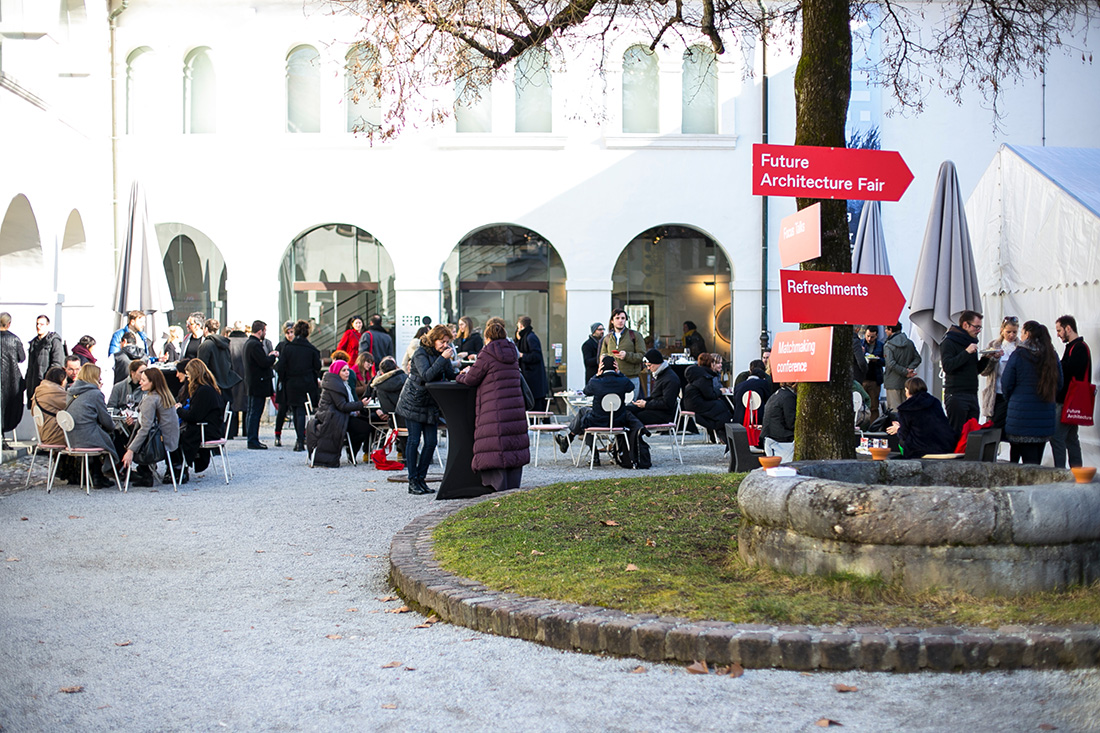
The Slovene pavilion at the Venice Biennale of Architecture; Home at Arsenale, a curated library addressing the notions of home and dwelling, 28 May – 27 November 2016; curators; Tina Gregorič, Aljoša Dekleva; commissioner: Matevž Čelik, photo: Janez Klenovšek
Where do you see yourself in 10 years?
I would like to continue with my work activities in the area of architecture. I plan to carry out research work related to the development of architectural profession. Since I am interested in the cultural production in the field of architecture, I will certainly be engaged in this area of expertise in the future as well. If I still work in the museum, our team will continue to develop the museum services related to the Slovenian architectural and design heritage. At the same time, we shall continue to strengthen our role in the European and global professional networks. I would like to create opportunities for the coming generations of experts and creators in the future as well, and I want to provide them with an opportunity to present their ideas to the wider public, and give them a chance to be heard by the right people. Even if, in ten years’ time, I no longer work for the museum, I wish that, at that time, the museum was focusing on the topics related to climate and demographic changes, new ways of living resulting from pandemics, and other modern-day topical issues.
In 2007, you published a monograph entitled New Architecture in Slovenia. Have you been thinking of publishing a new book? Are you, maybe, collecting material for a new book?
Thirteen years ago, it was really important to present contemporary Slovene architecture to the international public. That was the first book about contemporary Slovene architecture which was published by an international publishing house with a global distribution. Nowadays, some other tasks and duties shall be placed at the forefront. In MAO we started publishing intensively and we have issued more than forty publications in the period of ten years. I have edited some of them myself, most recently the catalogue We are renovating!!! which highlights the importance of renovating historical buildings, so that they can be re-used again. Today is definitely not the right time for giving the main priority to promotion of architecture in a national framework. We are now faced with many global problems and we will all have to make big changes in order to survive. At this very moment, nothing could be more important than exposing projects on that subject and thinking about our future and the role of architects who shall reverse negative trends by employing their knowledge and expertise. My next book will be about those issues, when I have enough time again to write it.
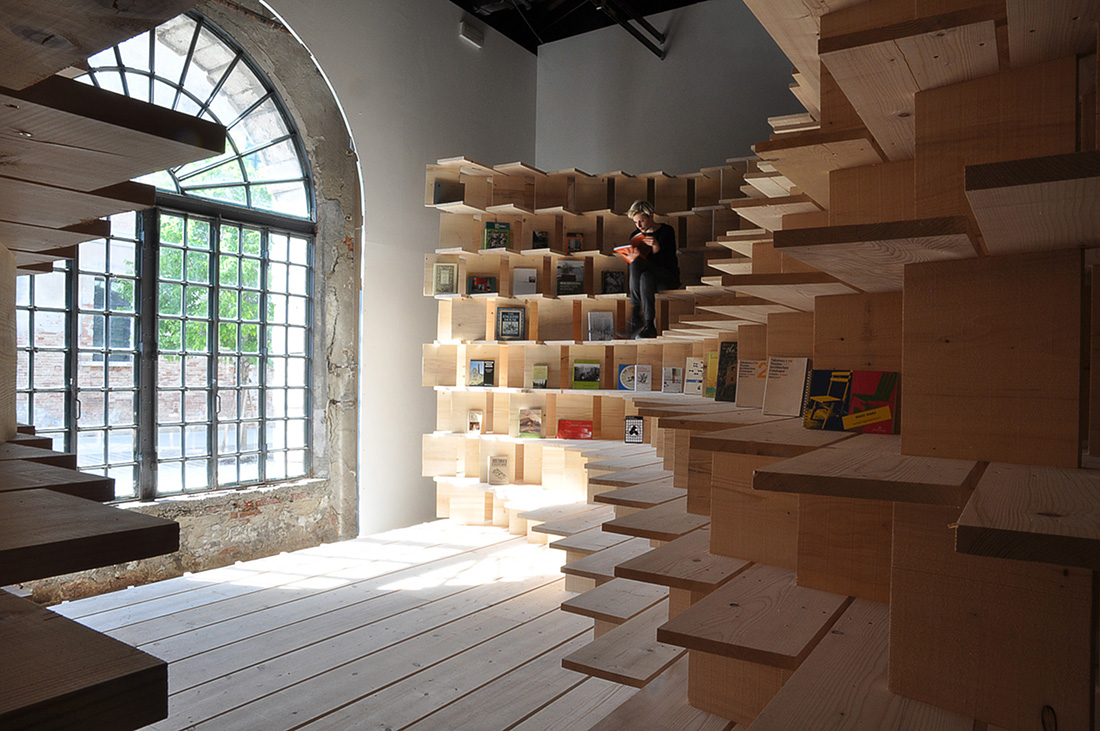
Faraway, So Close. 25th Biennial of Design (BIO 25); Countryside Reloaded, Genterovci; 25 May – 19 November 2017; curators: Angela Rui, Maja Vardjan; Head of Biennial of Design: Maja Šuštaršič
Do you think that this award will contribute to any changes in the way you work?
This award serves as a confirmation of my past work and it represents a great motivation for my work in the future. I hope that, due to this award, more people will learn about the Museum of Architecture and Design where they can get inspired by interesting objects and projects by some of the best authors of the Slovenian architecture and design. At the same time, the museum visitors can also get included in various programmes that shall help them develop their own professional practice.
You are, among other things, a member of the international committee in charge of awarding Prize for Urban Public Space. What is, in your opinion, a quality public space like?
There are many different types of public spaces, for instance: streets, squares, parks, promenades, parking places, river banks, playgrounds, recreation areas, etc. All these places possess certain qualities such as openness and the ability to link various places and integrate a fragmented city into a whole, thus creating a certain identity. Good public spaces usually do not bear any personal signature by the architect and they primarily represent a neutral space for public life. These are indeed public spaces, but they also provide certain intimacy. They are organised as well as spontaneous. In my opinion, quality does not depend on the project norms and the size of the budget. Certain small interventions, which can be carried out by rather modest financial resources, can sometimes be much more important than some grandiose moves. In Slovenia such viewpoints can be supported by extremely solid historical arguments based on the works by the famous Slovenian architect Jože Plečnik. This is all the more important for those environments, where public space investments do not fall within the scope of an established political routine, but are normally obtained with great effort. Committee members mostly come from wealthier, western countries, therefore I am one of the few members advocating the recognition and acceptance of even modest improvements and temporary projects that Southeast and East European countries are commonly faced with.
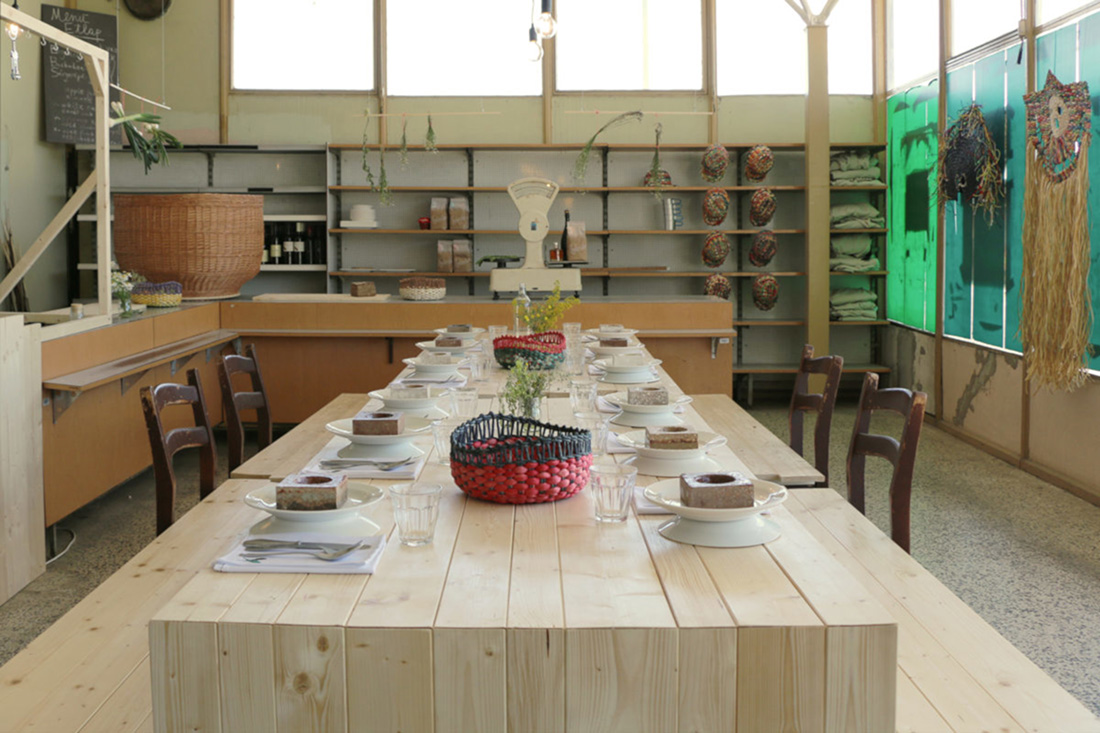
Toward a concrete Utopia, Architecture in Yugoslavia, 1948-1980, MoMA, 15 July 2018 – 13 January 2019; Curators: Martino Stierli, Vladimir Kulič; regional advisory committee: Matevž Čelik, Vladimir Deskov, Sanja Horvatinčić, Ana Ivanovska, Jelica Jovanović, Martina Malešič, Maroje Mrduljaš, Bekim Ramku, Luka Skansi, Mejrema Zatrić
You are a frequent visitor to various places in Slovenia and abroad. Which city (or urban and architectural place) has recently impressed you most and why?
I have been recently most impressed by Delta lab in Rijeka, Croatia. This is truly a place with energy. The former warehouse, located in the river Riječina delta, was transformed into a development platform by the architect Idis Turato. Nowadays, it represents a multidisciplinary research, educational and production centre which was, and still is, one of the driving forces of the Rijeka city, the European Capital of Culture 2020. Delta lab possesses a tremendous energy and a willingness to change the city of Rijeka which is focusing primarily on its port, Riječina river, and the coast.
What specific features of the Southeast European architecture are, in your opinion, worth exposing? What are the specific challenges that the architecture in the region will have to address in the future?
The Southeast European architecture is a hybrid architecture containing a mixture of various cultural influences. That is its main power that was canonized by certain authors in the past. That thesis is nicely illustrated in the extraordinary work by Juraj Neidhardt who, together with Dušan Grabrijan, developed a specific language of modernism in Bosnia and Herzegovina, where the features of the vernacular Ottoman architecture and Le Corbusier’s principles intersect. Such an example is also provided by Plečnik’s architecture which represents an innovative hybrid of classicism and modernism. I personally think that such mutual fertilization and enrichment of various types of knowledge and concepts is extremely important.
The challenges that the architecture in the region will have to address in the future will not be any different from the challenges in other parts of the developed world. Architecture will have to advocate and stress the importance of renovations of the existing buildings, since new constructions are becoming increasingly less acceptable, primarily due to environmental impacts and climate changes. Our primary duty and responsibility is to decrease negative impacts and stop climate changes. Many projects will also be related to the ageing demographic structure. The challenges the future brings shall also stimulate the architects in the region to call for radical and thorough changes in the architectural education.
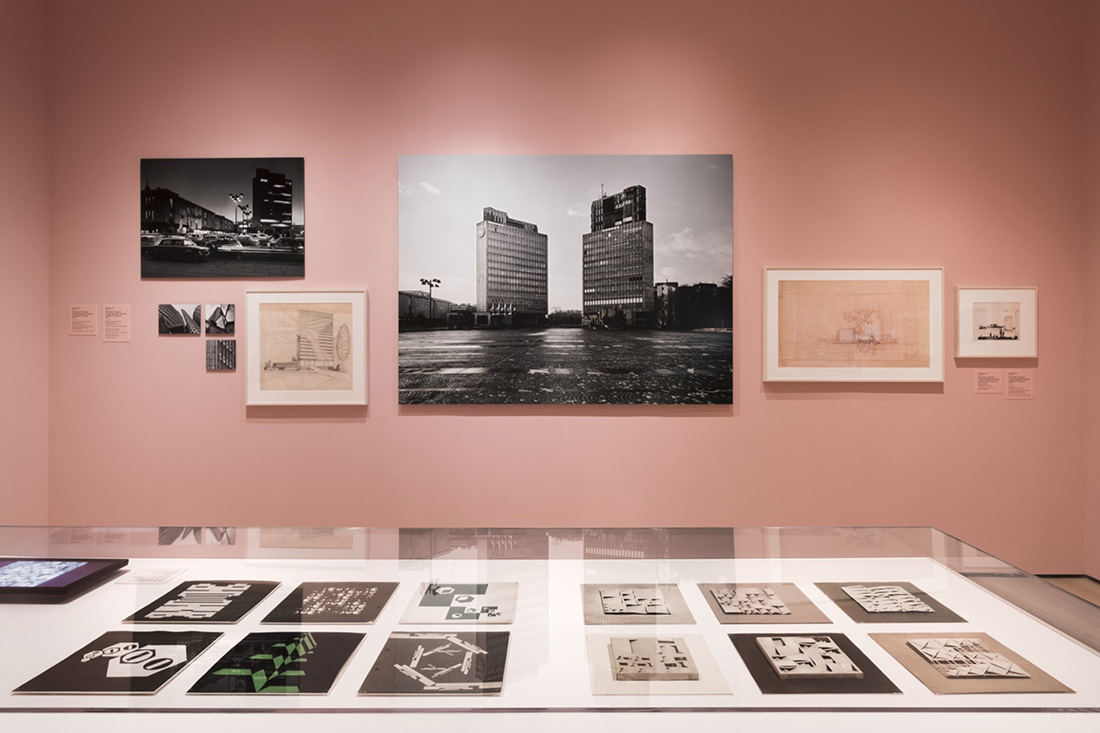
Future Architecture, Creative Exchange, 13 -15 February 2019
Can you provide an example of the unexploited Southeast European potential that shall be brought to light?
After the breakup of Yugoslavia, various powerful institutions in the region disappeared overnight. Nowadays, the nations are still closely connected and there is a great deal of cooperation within the framework of various projects. However, a permanent institutionalisation of collaboration, which used to exist in the past, represents a great potential which should be established again and immediately turned to our advantage. In my opinion, Yugoslavia still represents an important notion and I think that another type of coexistence among various ex-Yugoslavian nations should be established in the future, similar to the one in Scandinavia where, after finishing wars and disputes, the Scandinavian nations have lived side-by-side for many years.
What is your typical work day like?
One of my main daily work duties is keeping track of the staff work performance and assessing their progress by individual projects. I spend a considerable amount of time at the meetings with my work colleagues, with the Ministry of Culture officials, and our partners. Even though the meetings are quite time-consuming, I consider live communication extremely important. We hold regular Monday board meetings, where we discuss the programme and tasks for the current week, and we examine how our work is progressing. We also have small-group meetings, where we revise the progress of individual projects and work segments. I spend quite a lot of time on various reports and registrations of new programmes. Despite my numerous formal duties, I try to spend a certain amount of time on strategic planning. In the future, I would like to have more time for keeping up with the news related to the activities and developments in the area of architecture since I currently have a feeling, I do not have enough time for that.
What is your favourite routine?
My routines are probably similar to many other people’s routines. I like having a cup of coffee in the morning while at the same time thinking about my duties that day. I usually stop for a cup of coffee on my way to Ljubljana and I drink it in a restaurant located by the motorway in the small village of Tepanje. On Saturdays, I like shopping food at the marketplace and I also like cooking. One of my favourite routines is running in the nature.
Which architectural platforms do you keep track of?
When it comes to the world of architecture, I am much more interested in people with quality thoughts and opinions than in platforms. People whose opinions I consider important are, to name just a few: Marina Otero Verzier, Alice Rawsthorn, Giovanna Borasi, Justin McGuirk, Paola Antonelli, Aric Chen, Leopold Lambert, Ippolito Pestellini Laparelli, Eva Franch i Gilabert, Andres Jaque…
What is your favourite quote by a distinguished architect?
My favourite quote is, in fact, Einstein’s quote saying: “Life is like riding a bicycle. To keep your balance, you must keep moving. ” When discussing MAO museum and its future, I also often quote a sentence which he wrote at the time when his work colleague and friend Michele Besso died: “The distinction between the past, present and future is only a stubbornly persistent illusion.”
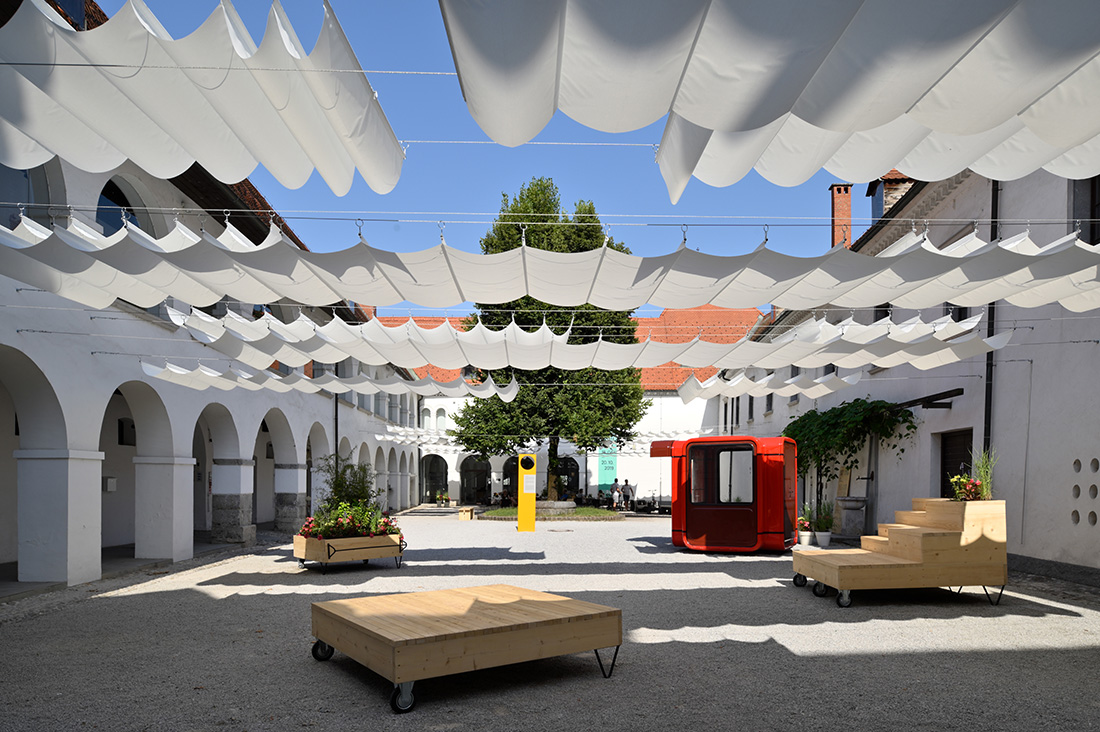
We are renovating, Layers of Time, 18 April – 20 October 2019, curators: Matevž Čelik, Natalija Lapajne, Andraž Keršič; coordinator of the yard renovation competition: Milan Dinevski; yard renovation architecture: Julio Gotor Valcarcel; the exhibition was part of the Future Architecture platform programme. Photo: Miran Kambič




